#Police Dogs
Explore tagged Tumblr posts
Text



#cops#gun control#gun violence#healthcare#miami dolphins#police#police dog#police dogs#trans women#homestuck
44 notes
·
View notes
Text

44 notes
·
View notes
Text

K-9 > cow
Cop > K-9
Cow > cop
#meme#memes#shitpost#shitposting#humor#funny#lol#satire#funny memes#funny meme#funny humor#twitter#tweet#news#animals#animal memes#cow#police dogs#cop#sarcasm#irony#joke#parody
388 notes
·
View notes
Text
This is such a hyper specific ask but other therians, can you tag your police dogs? Most of the time they are just posted under "working dog" and I'll be honest, I Hate seeing cop dogs. They are used for almost nothing except violence and the history of when and why they started to be used is actually horrorifying.
Tag your police dogs, I have the tag blocked for a reason and I feel bad blocking people for something as Lil as this but idk I've seen an influx on cop dog posts.
They are incredibly triggering (to me and my general circle at least) to PoC and specifically Black folks. Police dogs have never been a cool or fun thing to our communities. /nm /srs
••Edit••
Reblogs are definitely okay and appreciated
#i just wanna be able to filter it#i am so hyper aware if history#i am a black man whos greatgrandparents fought directly in the civil rights movement#my uncle has scars from having a police dog sicked on him#i dont want to see these puppies in the hands of the police /srs#just tag them#i beg of you#police dogs#acab#police dog#k9 unite#cw police brutality#therian#black therian#barks at queue#duckdog barks#discourse#i guess#tag request
160 notes
·
View notes
Text
Despite using dogs for more than a century, law enforcement agencies in the U.S. do not keep comprehensive or reliable data to support claims that police dogs reduce crime or make anyone safer. Indeed, there is debate about how many K9s, or police dogs, there are, how often they’re used, and who they’re being used against. In early 2023, when four researchers published a paper, titled “De-fanged,” in the Journal of Experimental Criminology, the group stated they were unaware of any existing “quantitative evaluation of the claimed benefits of K9s in policing.” Led by Ian T. Adams, a former canine officer who is now an assistant professor in the Department of Criminology and Criminal Justice at the University of South Carolina, the authors explained, “There is precious little empirical evidence to support any claims, whether by proponents or critics of police K9 programs.”
150 notes
·
View notes
Text
hey, since I'm on a roll of trivia my dad taught me: I learned that most police dogs are trained in German (and sometimes in Dutch). So I made a quizlet of some common Dutch and German words for heel, sit, back, down etc- just for fun of course <3 Who knows, it might not even help with anything, but surely it can't be a bad idea to know.

credit for about half of the translations from here and here (the other half are just google translated by me lol).
#police dogs#police#protest safety#protest#tw dog attack#dog attack tw#it's implied so worth a tag.#as per usual: if i have said anything wrong or harmful PLEASE call my ass out on it#~ europa#other thing: please do not think that memorizing these terms will act as an end all defense against a police dog. its still highly trained#so dont be stupid. dont approach. this is just one small line of defense#also its a wip so if anybody has advice/contributions theyre welcome#palestine protest#college protests
12 notes
·
View notes
Text
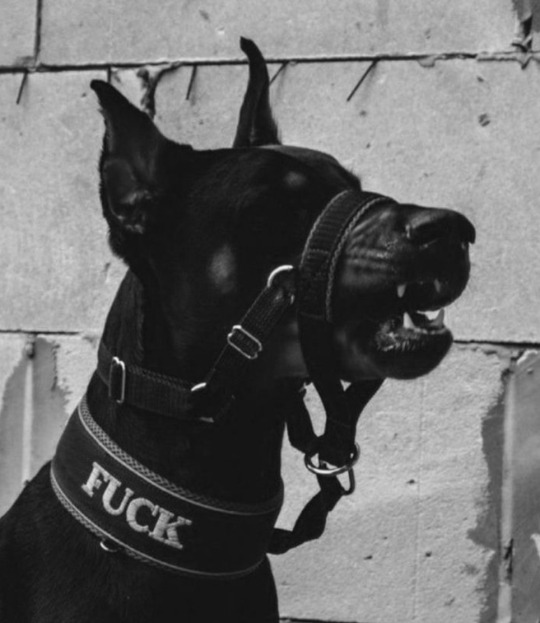

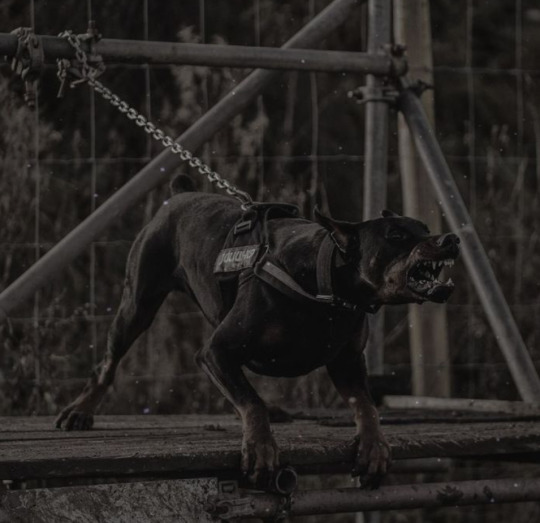

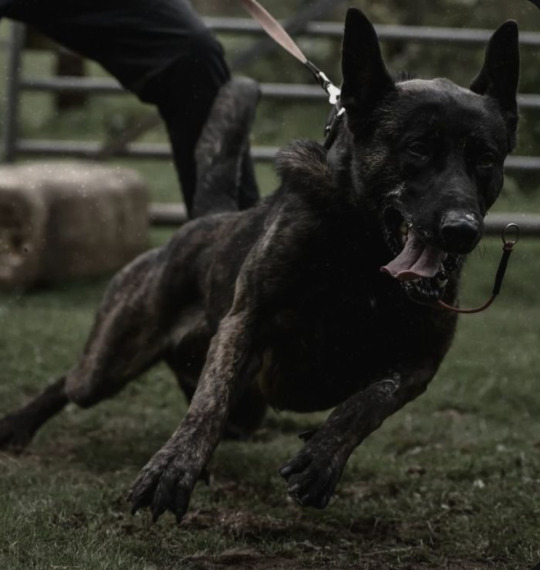

All bite no bark.
#K9#doberman pinscher#doberman#belgian malinois#malinois#cane corso#shepherd#hounds#hound#canine#military working dogs#police dogs#canines#working dogs#tactical dog#K9 dogs#K9 working dogs#canine aesthetic#aesthetic
116 notes
·
View notes
Text
An anecdote that constitutes what is essential
#music#retrofuture#electronic#aesthetic#bright#bass#synth#immateriality#police dogs#bandcamp#Bandcamp#me
22 notes
·
View notes
Text
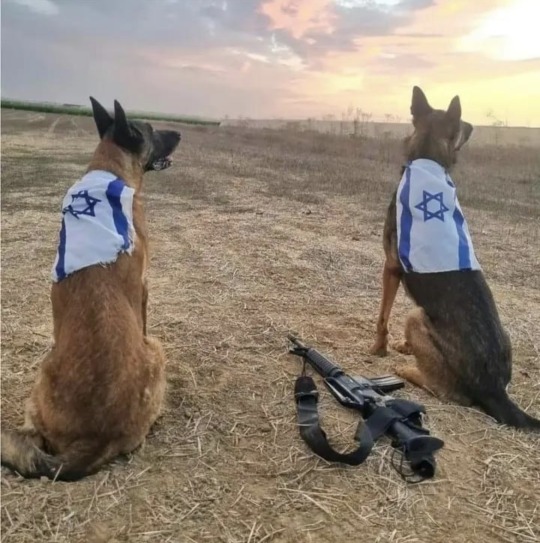
Am Y'Israel Chai
#secular-jew#israel#jewish#judaism#israeli#jerusalem#diaspora#secular jew#secularjew#islam#police dogs#idf dogs#k9#army dogs#special forces canines#canines#police canines#police k9#canine duty#idf#10 7 23#Hamas#gaza#gaza war#hamas is isis
24 notes
·
View notes
Text
Here's an unfinished artwork of mine

22 notes
·
View notes
Text
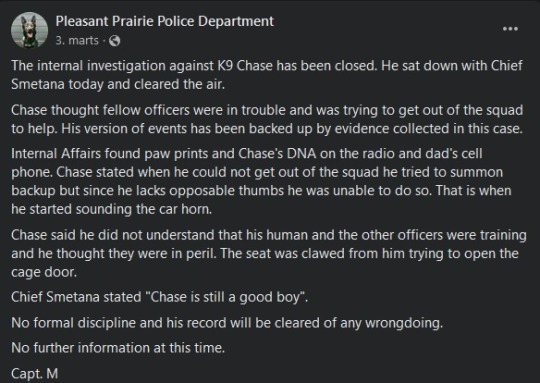

I Love This Story About K9 Chase
16 notes
·
View notes
Text



Got my beautiful dressing 👗💞
#cops#gun control#gun violence#healthcare#miami dolphins#police#police dog#police dogs#trans women#homestuck
8 notes
·
View notes
Photo

200 notes
·
View notes
Text
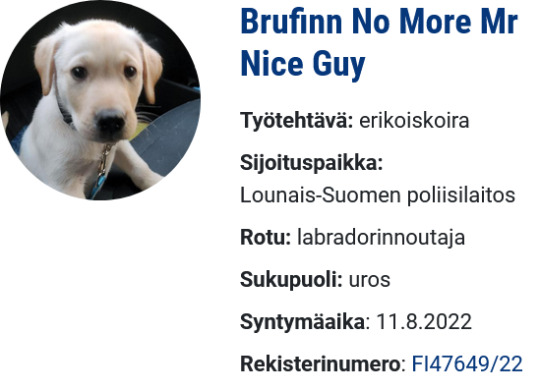

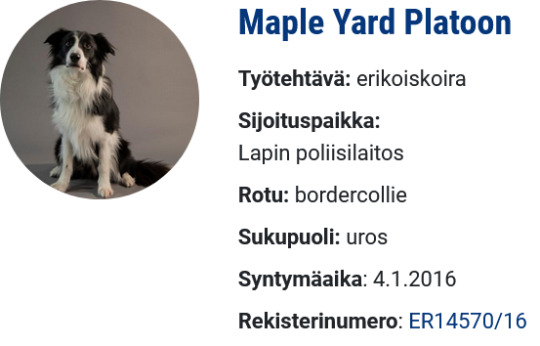
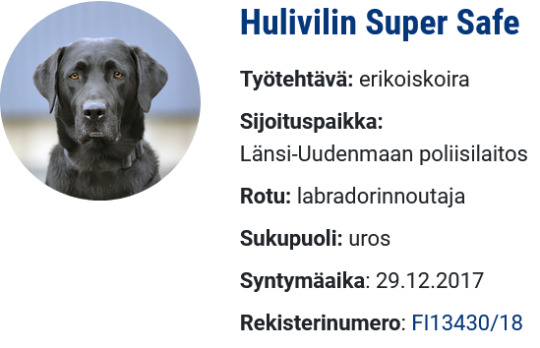

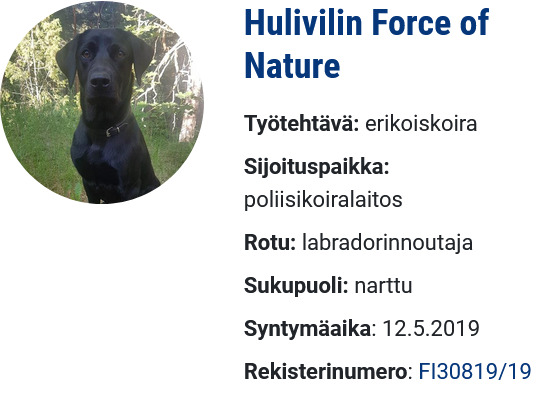


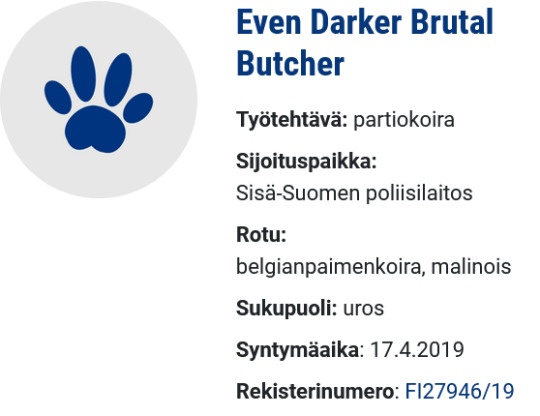

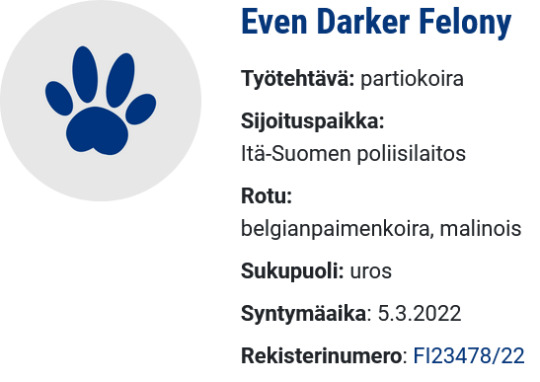
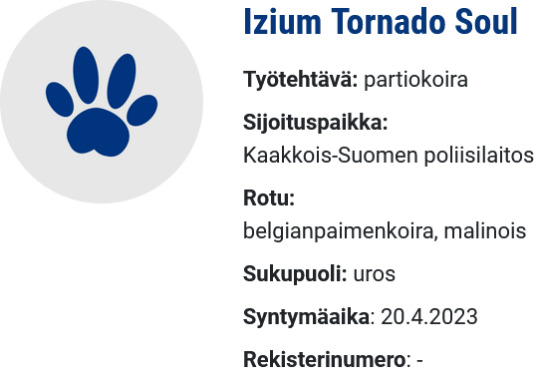

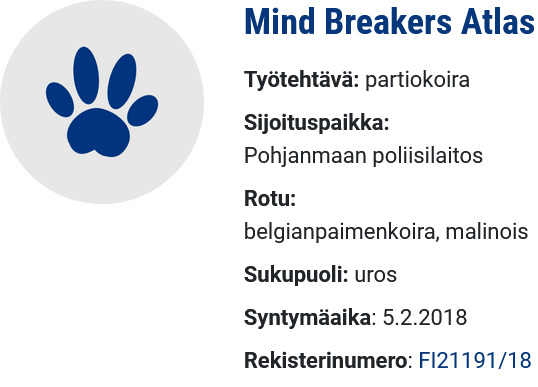
The registered names of some Finnish police dogs
36 notes
·
View notes
Text
[The use of police dogs as a novel technology, one adopted by rank and file police officers with enthusiasm, ostensibly to enhance 'crime-fighting' by tracking bank robbers and escaped prisoners, but one that consistently failed to deliver results due to poor training and poorer handling. A consistent theme of police dogs, whether bloodhounds or narcotics dogs, is their high rate of error and general inability to deliver consistent results.]
"To further ensure the CPR’s profits were not affected by American “desperados,” [General Superintendent, Canadian Pacific Railway Pacific Division, Richard] Marpole recommended that troops of Royal North West Mounted Police be stationed at critical points along the CPR’s main line and at a strategic point in the south Okanagan or Kootenays.
At the expense of the B.C. Provincial Police, his editorial described the Mounties as “a magnificent body of men” that Alberta and Saskatchewan were lucky to have to maintain law and order in those provinces. Marpole also was not averse to incorporating American law enforcement techniques into Canada. “I am strongly in favour of keeping bloodhounds at certain points in this province,” he wrote. He went on to praise the handlers of the dogs that had come up from Spokane as “men of experience as hunters of outlaws.”
....
Despite the spectacular lack of success experienced by the bloodhounds brought in to hunt down the Ducks robbers, [B.C. Police Superintendent F.S.] Hussey was getting pressure from some of his constables in the Kootenays to authorize the use of the hounds in their regular work. On 20 June 1906, Hussey wrote Attorney General Fulton on the topic. He noted that some Provincial Police members kept their own bloodhounds and wished to be able to use them at their discretion without checking with Victoria first. Constable Young in Nelson, who had such a pitiful lack of success with his dogs south of Ducks, owned six, and Constable Darraugh of Midway had one or more. Other officers had solicited him for permission to be able to own and use such animals.
Hussey advised the Attorney General [Fulton] that in his judgment the dogs were almost useless unless they had been highly and competently trained in man hunting and were in the hands of exceedingly skilled handlers. It is under only the most favourable circumstances that these animals could be successful and do useful work.
He noted also that there exists a strong feeling from the general public against such use of bloodhounds excepting perhaps in the most extreme cases. Hussey recommended to Fulton that under no conditions should the use of bloodhounds be authorized except under the direct permission of the Superintendent’s office in Victoria.
He requested instructions from Fulton so that he might advise the constables in the field, and Fulton agreed that they should not be used in B.C. unless under emergency conditions.
...
[B.C. Provincial Police] Chief Constable Campbell had been eagerly anticipating an emergency situation to make use of the services of a local bloodhound and its trainer, Bradford Nanton of Vancouver. Despite Hussey’s reluctance to utilize the animals, the rule was initiated that under special circumstances they might be employed. As soon as Campbell received the call from [Acting Warden] Bourke about the prison breakout, he assigned Constable Spain that evening to escort the hound and handler to the B.C. penitentiary.
When Campbell and Spain, the handler and his hound arrived at the prison, they were met by some prison guards. The guards escorted the party to the brickyard, where the hound was given Miner’s scent from the straw hat he had left behind. Immediately the hound picked up the scent in the brickyard, and after circling the compound a few times, it tracked the scent to the hole under the fence.
Moving into the outer yard, the hound picked up the scent again which led the party to the door in the perimeter wooden wall. Here it was determined by the dog’s actions that Miner had tried the latch on the door before leaning the ladder on the fence and clambering over. The hound sat down and whined at the base of the ladder that was still leaning against the wall. Outside the prison walls, the dog led them alongside the ravine that held Glen Stream and into the brush to the north. As it was too dark to be thrashing about in the thick underbrush and risking destroying the scent, the handler and his hound, Spain and the guards called off the search until daylight.
Daybreak at 5:30 A.M. found the previous night’s bloodhound party joined by two newspaper reporters. The guards included Keeper W.A. Patchell, Instructor Doyle and guards Devine and McLure. ... The handler led the hound to where they halted the search in the dark the previous night, and again presented the animal with Bill Miner’s scent. The trail was picked up once more, and the party was led through the brush about a mile and a half from the penitentiary wall. The dog was able to show the guards and the trackers that Miner had separated from the other convicts at a location close to Thorne Road and the city boundary. Here the dog inexplicably seemed to have a change of heart, and the newspaper reporter described the animal’s antics in a scathing paragraph.
The bloodhound chase was a total failure, the animal seemingly being out of whack, and its owner out of sorts. The animal, a highly bred English hound, seemed to be primed for work, but after a few whiffs of the damp alfalfa, he apparently lost courage, and could not pick up the scent. He ... sulked fearfully Friday morning.
Patchell also described the hound as “sulky,” and after the searchers had wandered through the brush for two hours, he reported that the seemingly moody and sensitive animal refused to work any more. The fruitless search with the dubious aid of the emotionally challenged canine and his handler was abruptly terminated.
Colin Campbell’s expectations that the hound would be able to enhance the search efforts proved groundless, and it was to be some time before the Chief Constable, later to inherit Superintendent Hussey’s mantle, would again cast his eyes towards a dog to aid in the apprehension of criminals."
- Peter Grauer, Interred With Their Bones: Bill Miner in Canada, 1903-1907. Kamloops: Tillicum, 2006. p. 291, 396-397, 440-442.
#bloodhounds#police dogs#policing#police search#bill miner#animal technology#british columbia history#kamloops#british columbia penitentiary#train robbers#train robbery#british columbia provincial police#reading 2024#research quote#history of crime and punishment in canada#police dog
2 notes
·
View notes
